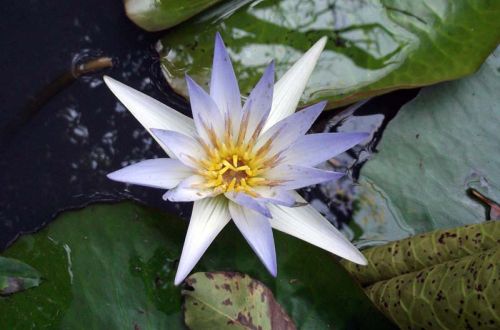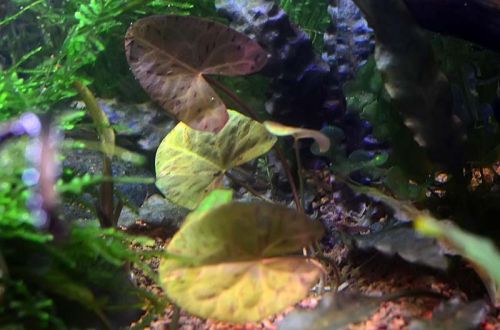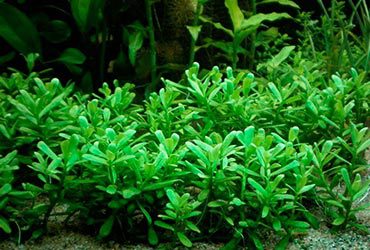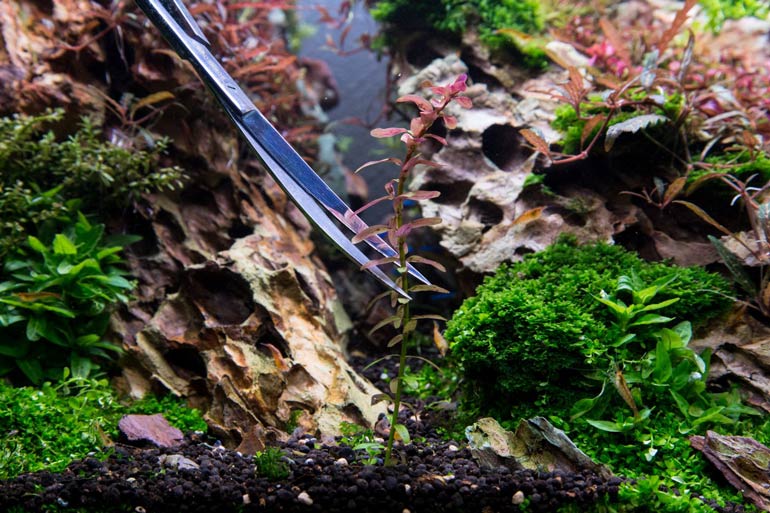
Како правилно орезати акваријумске биљке
Among aquarium plants, there are several types – these are stem, rosette, mosses and ferns, which in turn are divided into subtypes. They differ in structure, methods of rooting and reproduction, have a different character and growth rate. In this article, we will show you how to properly divide, propagate and prune different types of plants.
Садржај
Pruning stem plants

Stem plants tend to grow in height and in a favorable environment, they quickly reach the surface. In this case, in many species, the formation of aerial leaves occurs, and the lower ones gradually die off due to a lack of light. As a result, the appearance of the plant noticeably deteriorates.
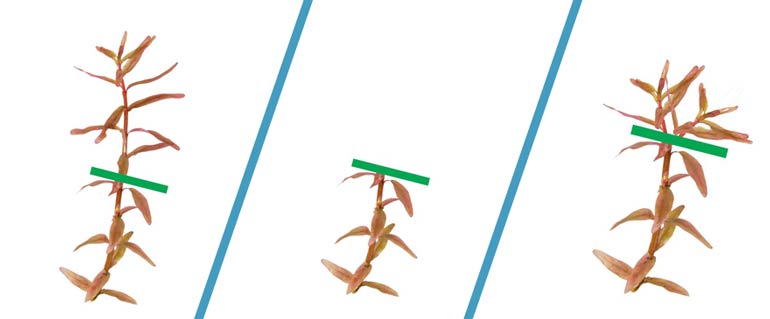
Timely pruning solves this problem. It is recommended to make a cut approximately in the middle of the stem between the leaf nodes. The separated fragment is either thrown away or planted in the ground. It will soon take root.
On a cut plant, new lateral shoots appear over time. After a few weeks, having reached the desired height, they can be cut again.
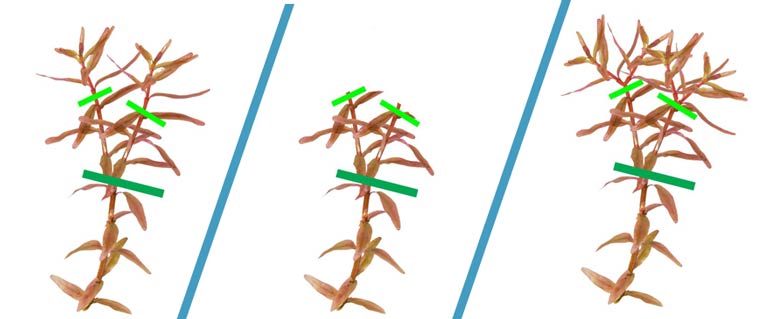
The process of pruning newly emerging shoots can be continued further. Thus, a voluminous “tree” is formed from a single stem. However, there will come a time when the plant will become too tall and thick and will have to be drastically reduced. Or cut off the stem just below the place of the very first pruning. Or separate the most beautiful shoot and plant it as a new plant, and remove the old ones.
The process of splitting a stem can be simultaneously considered a method of propagating stem plants.
Pruning rhizomatous plants
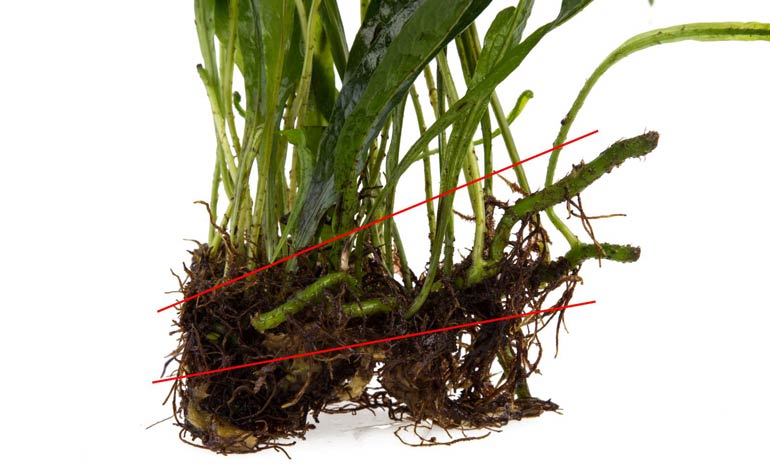
The subtype of rhizomatous plants includes anubias, bucephalandra and some other plants, as well as many ferns. They have a pronounced massive creeping root or a modified stem, called a rhizome, from which numerous roots, leaves and young shoots extend.
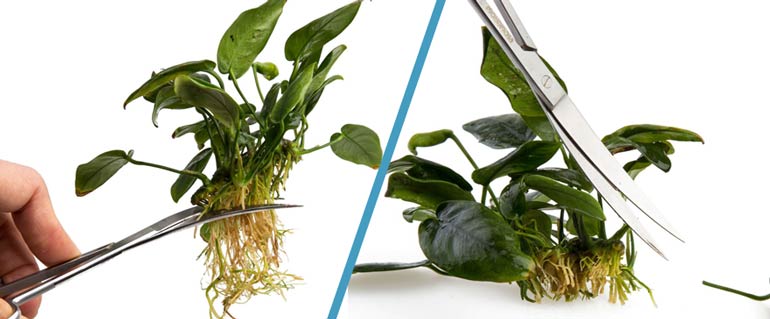
The rhizome is the most important part of the plant and should not be damaged. Old or damaged leaves can be safely cut with scissors along with the stem. Roots can also be trimmed.
In the case of anubias, you can completely cut off all the leaves and roots, leaving only the rhizome, over time, new young leaves will appear from it.

When it becomes necessary to divide an overgrown plant into parts, then pruning occurs along the rhizome. It is necessary to use a very sharp tool so that the cut is even without squeezing and tearing, otherwise there is a high probability of decay.
It is worth noting that in ferns, such as the Java fern, Bolbitis heteroclita and the like, old leaves are used for propagation along with the rhizome. So-called adventitious plants are formed from the bottom – a new sprout on an old leaf. At the same time, shoots develop more intensively on cut leaves than on old ones growing on a rhizome.
moss pruning
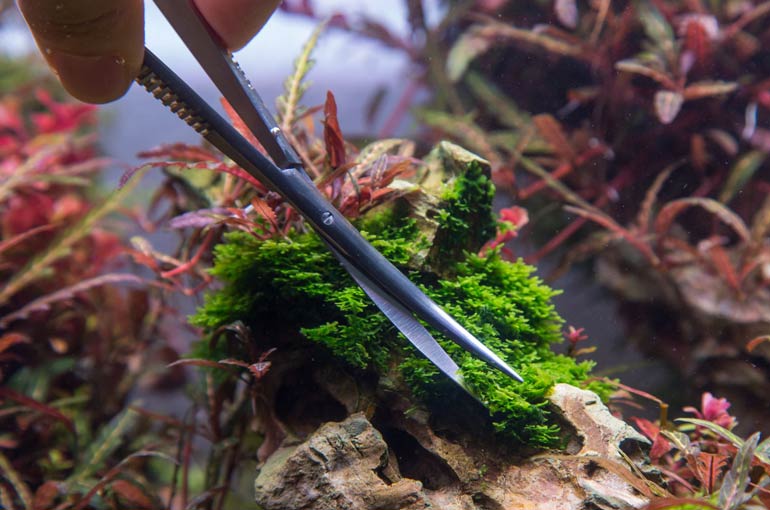
Mosses require little to no care and are easy to trim. They can be cut with scissors and divided into fragments. It is worth remembering that any separated piece of moss can become the basis for the formation of new thickets. This must be taken into account if pruning is done underwater.
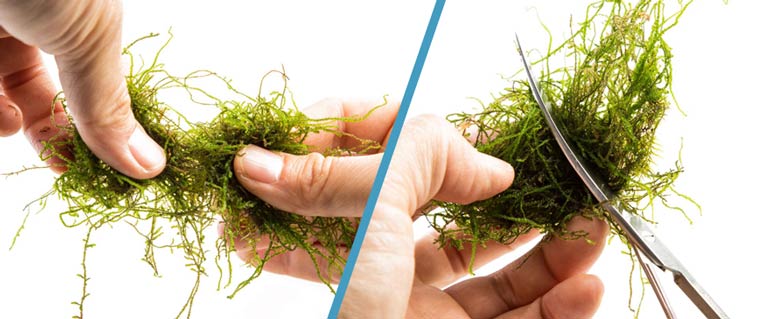
During pruning, it is recommended to temporarily turn off the filter and use a siphon to remove cut pieces of moss in order to avoid unwanted overgrowing of the aquarium.
Trimming “carpet” plants
Plants of this subtype can be either stalked or rosette. The main thing that unites them is the features of growth. They form undersized dense grassy thickets covering the accessible surface of the soil, resembling a lawn or green plant “carpet”. The most famous species of this group are Hemianthus Cuba and Glossostigma povoynichkovaya.
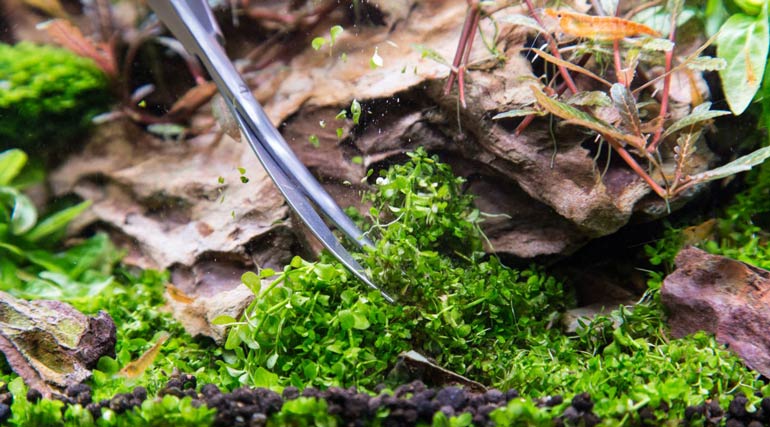
Each miniature sprout is tightly intertwined with the neighboring one, so it is not possible to isolate a single plant. With the help of special scissors with curved blades, a haircut is made. Mosses are cut in a similar way, but unlike the latter, the cut off parts of the “carpet” plants do not give new shoots. Separated fragments are removed by siphon.
Pruning rosette plants
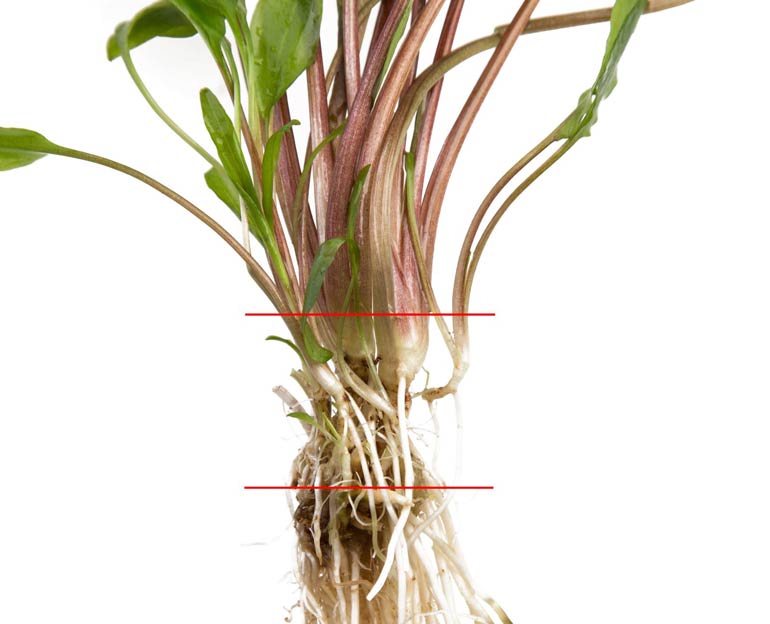
The most popular representatives of this type in the aquarium trade are Cryptocorynes and Echinodorus. Their stem is very short and passes into a compact main root, like a rhizome, only a small one, hidden behind a dense bunch of smaller roots. The leaves are very densely arranged at the tip of the stem, forming a leaf rosette. Each new leaf grows from its center. On the miniature rhizome of the rosette, new, child rosettes are formed. They can be carefully separated and planted as an independent plant.
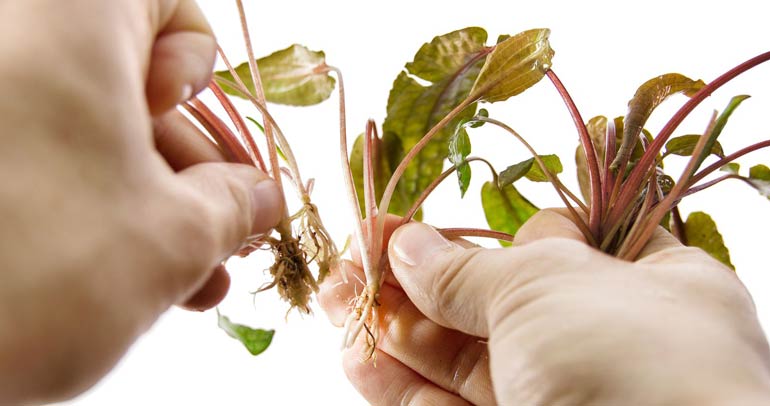
The central part, the one with the root and stem, is the most important part of the plant and should not be damaged by pruning. You can even remove all the roots and leaves from it, and an updated plant will appear in the nutrient soil from it.
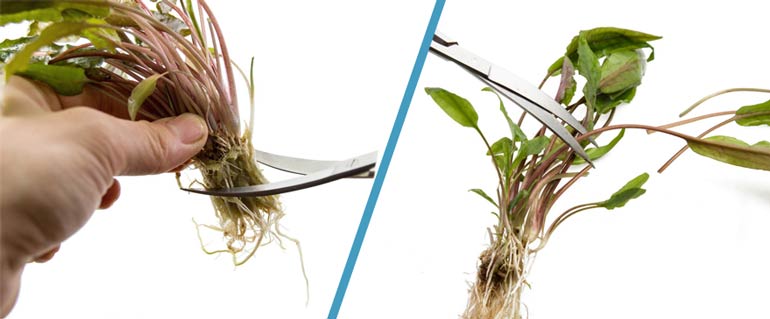
Accordingly, the leaves can be safely cut with scissors when they become too large or spoiled by algae, herbivorous fish. The cut leaf is removed; a new plant will not grow from it.
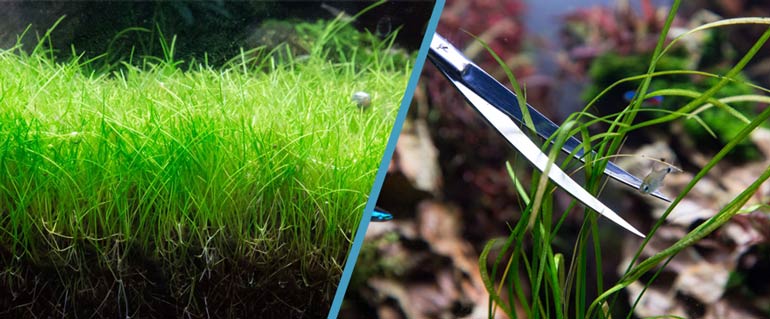
Some species, such as Vallisneria dwarf, look like “carpet” plants. They are also allowed to be trimmed, since it is too painstaking work to remove each small leaf individually. The leaves cut in this way, as a rule, die, but new ones quickly appear from the outlet.
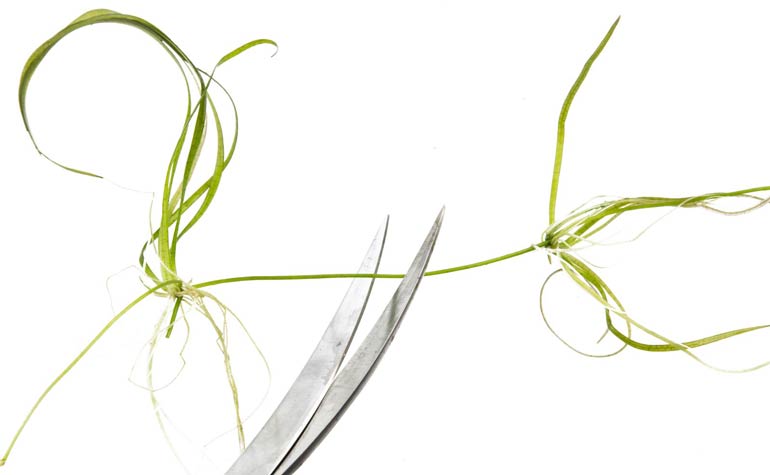
Vallisneria reproduce by numerous lateral shoots connected to the mother plant by long arrows. To separate a new sprout, it is enough to cut the arrow.
Pruning tuber plants
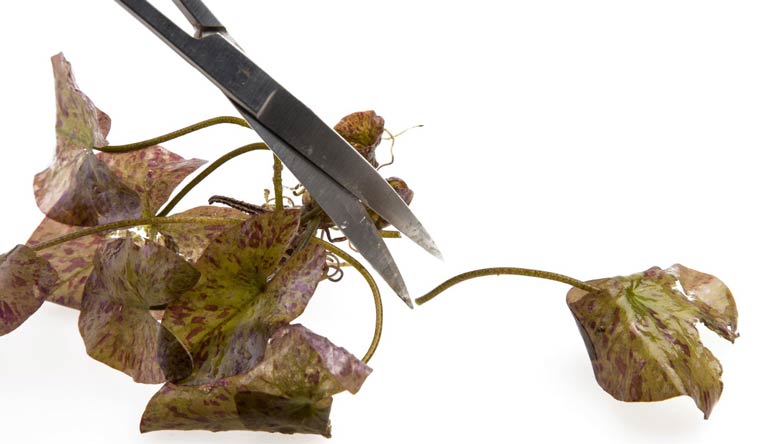
The well-known Aponogetons, Krinum, Nymphea brindle belong to this type. The principle of pruning is similar to that of rosette plants. It is allowed to cut the roots and old leaves, but the tuber / bulb must not be damaged.
An important point, in plants such as Crinum, you can not cut the leaves at the very base, since their lower part performs the same functions as the bulb – it stores nutrients.



